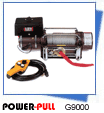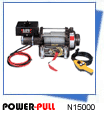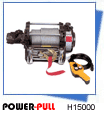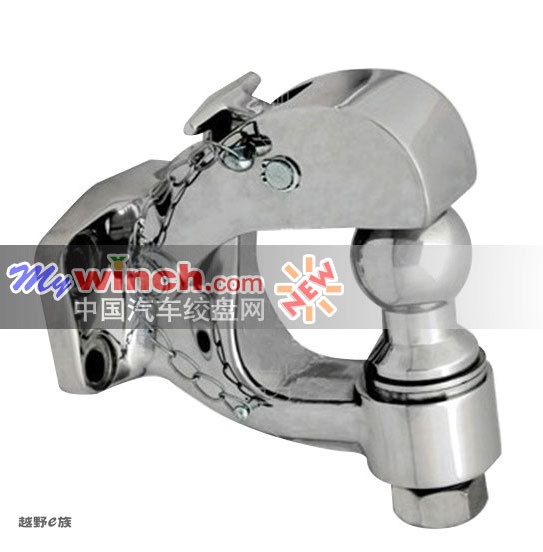Understanding Towing(拖车钩详解)

It is very important to review your vehicle owner's manual before purchasing a towing system. The owner's manual has helpful information about the vehicle's capabilities and limitations. It is also important to be aware of the different laws and restrictions which exist when towing from state to state. The State Patrol is a good resource for this information. | |
Gross Trailer Weight (GTW) The gross trailer weight is the weight of the trailer and cargo. Measure this by putting the fully loaded trailer on a vehicle scale. Boat + Trailer + Cooler + Fishing Gear = Weight Carrying  | Weight Carrying Capacity (WC)
|
Weight Distributing Capacity (WD) The measure of the total weight a trailer hitch can safely pull with a weight distribution system installed. The use of a weight distribution system balances the weight of the cargo throughout the trailer, allowing for better steering, braking and level towing.
| Tongue Weight (TW) The downward force that is exerted on the trailer ball by the coupler. The tongue weight will vary depending on where the load is positioned in relationship to the trailer axle(s). To measure the tongue weight, use either a commercial scale or a bathroom scale with the coupler at towing height. When using a bathroom scale, use the method shown and multiply the bathroom scale reading by three.
|
Sway Control A device used to reduce the lateral movements of trailers which are caused by the wind. These may be used with or without a weight distribution system. Do not use this on a trailer hitch with an 1 1/4" x 1 1/4" receiver tube opening or on trailers with surge brakes.
Trailer Balls The object that connects There are many factors that determine the correct trailer ball:
Every time you tow, check the nut and lock washer to make sure they are fastened securely. Note: The mounting platform must be at least 3/8" thick.
| Safety Chains Safety chains are required by law and should be crossed under the tongue of the trailer so that the tongue will not drop to the road if it becomes separated from the hitch. Always leave enough slack so the vehicle can safely turn. Never allow the safety chains to drag on the ground and never attach the chains to the bumper. CURT offers chains in a variety of capacities to meet your towing needs. Each safety chain or safety cable must equal or exceed the gross trailer weight rating of the trailer. 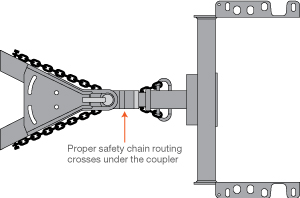
Bumper Hitches These hitch applications are only used for light weight towing, including bike racks and cargo carriers. Towing weights should not exceed the vehicle's bumper gross towing weight rating; hitch capacities are limited to bumper capacities. Do not use a weight distribution hitch with these products. |
Ball Mounts The ball mount is placed inside the receiver tube opening of the trailer hitch, which is mounted to the vehicle. Make sure a lock or a pin & clip is properly securing the ball mount to the trailer hitch before towing.
| Couplers The component that is placed over the trailer ball to connect the vehicle to the trailer. The trailer's coupler size determines which trailer ball to use - the two sizes must be identical. Always make certain the coupler handle is securely fastened. Be sure the coupler is properly adjusted to the trailer ball.  |
Pintle Hooks and Mounts Pintles and pintle mounts are most commonly used in the agricultural and construction industries to tow large equipment. CURT carries a variety of pintle and combination ball and pintle hooks to help tow the heaviest of loads.  | Gooseneck Hitches Commonly used to haul livestock, horse trailers or heavy work trailers; the CURT gooseneck hitch line offers several styles to fit the towing application. The under-bed hitches and installation kits allow full use of the truck bed.  |
Accessories CURT's accessory line provides a wide variety of protection for the vehicle's towing system while a trailer is not being towed.  | Hitch Pins/Locks For securing all ball mounts and other hitch mounted accessories to trailer hitches. Hitch locks have the added benefit of theft deterrence. |
拖杆系统的英文名称为Towbars,是一种球型拖车装置,中文名称很多,有牵引杆、拖杆、球型拖车钩,国内有些车友形象的称为“流氓钩”,它是一种汽车的拖车牵引装置,由固定支架、球型拖钩、拖车电源模块组成,安装在汽车的尾部,用于拖拽拖车、游艇、摩托车、房车、自行车架、行李箱等。在欧洲,大多数汽车都配有Towbars系统,并且很多品牌的汽车出厂就带有拖杆,Towbars已经成为汽车必不可少的部件,并已经形成行业标准。
相关浏览拓展:
- 帕萨克(PASAK)自动拖车钩(Pintle Hook)http://www.mywinch.com/bbs/dispbbs.asp?boardid=57&id=338&page=1&star=1
- WESTFALIA拖钩系统http://www.tosoo.com/html/54/n-6054.html
- 拖救利器——Double Trouble 双钩拖钩http://www.tosoo.com/html/93/n-4893.html



